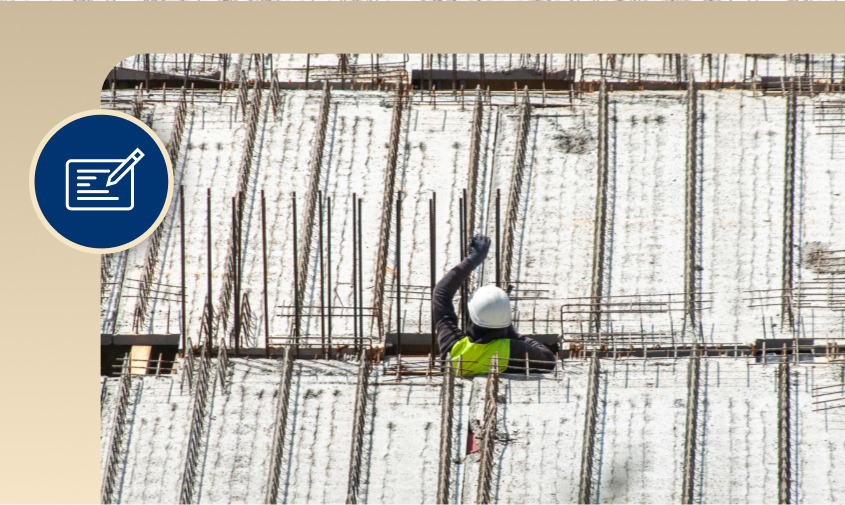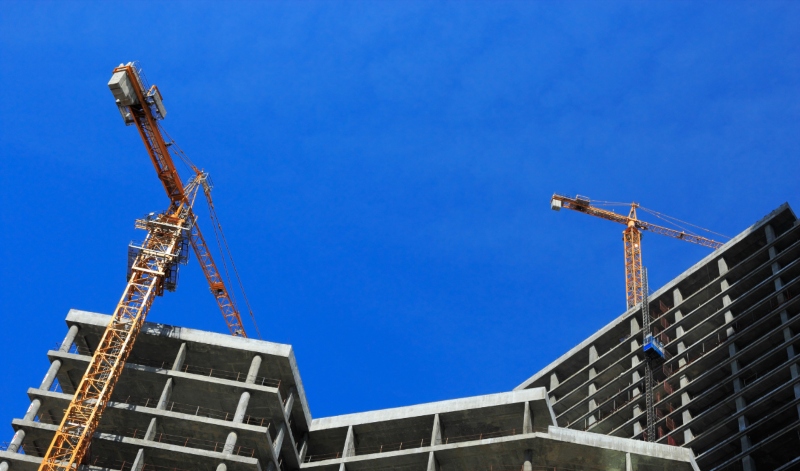How AI Tools Are Transforming Construction Contracts

AI rapidly transforms the construction industry, offering innovative solutions that streamline processes, enhance decision-making, and improve project efficiency. From automating labor-intensive tasks to providing real-time insights, AI tools are reshaping everything from site analysis to materials management.
One such breakthrough is AI construction contract management software, simplifying contract oversight, ensuring compliance and reducing errors. In this article, we’ll explore the key features, benefits, and challenges of AI-driven tools in construction and how they’re revolutionizing how projects are designed, managed, and executed.
What Are AI Construction Tools?
AI construction tools leverage artificial intelligence to tackle complex processes across construction projects. They streamline tasks, analyze data, and improve pre-construction and execution phases. Using machine learning, natural language processing, and predictive analytics, these tools automate labor-intensive work, enhance decision-making, and minimize errors.
Tasks such as site analysis, materials management, and compliance monitoring often consume significant time. AI technology reduces these manual efforts by offering precise, data-driven solutions. For instance, machine learning models help forecast potential delays or cost overruns, while image recognition tools assess jobsite safety risks in real time.
Robotics and autonomous systems also fall under the AI umbrella in construction. These tools assist with repetitive activities like bricklaying or excavation. Advanced language processing applications support contract analysis by reviewing and extracting key clauses quickly, saving legal teams hours of manual review.
Real-time project tracking applications have brought transparency to construction. By continuously assessing data from connected devices and sensors, AI provides actionable insights that help construction teams stay informed and maintain schedules. Their integration with existing construction software makes these tools versatile and scalable.
Key Features Of AI Construction Tools
Leveraging AI tools in construction has introduced a wave of transformative features to tackle industry challenges. These tools use advanced technologies to simplify complex tasks, increasing precision and saving time.
Automation And Efficiency
AI construction tools streamline repetitive and time-intensive processes. For instance, automated scheduling software organizes tasks efficiently, adjusting timelines dynamically when delays occur. Robotics further contributes by executing repetitive tasks like bricklaying or welding with speed and accuracy, significantly reducing labor efforts. Automated document review systems ensure contract compliance by identifying inconsistencies and missing elements in seconds.
Real-Time Data Analysis
Real-time monitoring capabilities keep projects on track by identifying deviations immediately. Drone technology, combined with AI, captures high-resolution images of sites, providing instant feedback on construction progress. AI-driven dashboards offer actionable insights by analyzing large datasets, such as workforce productivity or daily material usage, in minutes rather than hours. These tools ensure adjustments happen before minor issues grow into costly delays.
Predictive Analytics
Predictive models help foresee project risks by analyzing historical and current data. Algorithms assess factors like weather, supply chain conditions, and workforce availability to suggest proactive measures. For example, AI can predict equipment failures, enabling preemptive maintenance rather than reactive repairs. These systems also forecast cost overruns, helping stakeholders allocate resources strategically before exceeding budgets.
Enhanced Safety Measures
Safety-enhancing features detect hazards early, providing a safer environment for workers. AI-powered cameras monitor job sites for unsafe actions or equipment usage and send alerts immediately. Integrated with AI, wearable technology tracks worker health metrics like fatigue or heat exposure, reducing accidents. Virtual training modules simulate real-world scenarios, equipping workers with essential skills while mitigating risks on active sites.
Benefits Of Using AI In The Construction Industry
Artificial intelligence continues to bring game-changing solutions to construction challenges. Its integration offers noticeable improvements across cost efficiency, project organization, and decision-making processes.
Cost Reduction
AI tools analyze vast data to find cost-saving opportunities during the pre-construction and building phases. Algorithm-driven budgeting software identifies overspending by pinpointing resource inefficiencies. Predictive maintenance systems minimize equipment repairs, helping contractors avoid unexpected machinery failures. For instance, machine learning models monitor wear-and-tear patterns, prompting timely action to extend equipment lifespan. Combined with task automation, streamlined expenses drastically reduce unnecessary overheads.
Improved Project Management
Dealing with overlapping schedules, material orders, and workforce allocation becomes simpler with AI-driven systems. Dynamic scheduling platforms adjust in real-time when delays, supply chain issues, or on-site challenges arise. Construction management dashboards provide centralized access to timelines, budgets, and progress updates, ensuring steady team communication. Predictive analytics enable managers to forecast potential obstacles and allocate resources more effectively. By automating routine coordination tasks, teams concentrate on critical objectives, minimizing confusion and wasted effort.
Faster Decision Making
Insights generated through AI accelerate the decision-making timeline. Drone inspections equipped with vision analytics deliver instant assessments of construction sites. Machine learning algorithms analyze site conditions to suggest quick, actionable solutions when problems surface. Contract review software powered by natural language processing highlights key clauses, simplifying legal evaluations. Faster access to relevant data reduces downtime and empowers professionals to make informed choices without delays.
Leading AI Construction Tools In The Market
AI tools fundamentally reshape construction projects’ design, management, and execution. Companies are increasingly adopting these tools to achieve better efficiency and tackle challenges more effectively.

Design And Planning Tools
Modern design tools powered by AI streamline workflows and provide actionable insights during early project stages. Building information modeling (BIM) platforms now integrate AI algorithms to predict construction costs and optimize design layouts based on project constraints. For example, platforms like Autodesk’s generative design systems consider material use, structural integrity, and environmental factors to recommend efficient designs. Using satellite imagery to inform location-specific decisions, AI-based site analysis applications assess topography and geology. These innovations save time and improve resource allocation during the crucial project planning phase.
Project Management Solutions
AI-driven solutions simplify complex project coordination, making management seamless across teams. Dynamic scheduling software like Procore adjusts timelines in real-time based on progress updates, supply chain disruptions, or weather forecasts. Predictive analytics monitor project data to identify risks, such as delays caused by labor shortages or logistical bottlenecks, before they occur. In addition, integrated communication dashboards centralize project information, ensuring teams stay informed and aligned across all stages. Combining these tools reduces inefficiencies from miscommunication and delays.
Safety Monitoring Systems
Safety systems powered by advanced technology are crucial in preventing workplace hazards. Intelligent cameras equipped with computer vision detect non-compliance, such as missing protective gear, and provide real-time alerts. Wearable technology tracks workers’ health metrics and identifies potential risks like heat exhaustion or overexertion. Paired with AI software, drones routinely inspect unsafe or inaccessible areas, detecting structural vulnerabilities or unsafe conditions. These innovations reduce accidents and improve job site oversight, fostering a safer working environment.
AI Contract Review Software for Construction Projects
AI contract review software in the construction industry simplifies and accelerates the process of reviewing construction contracts by automatically analyzing key clauses, identifying compliance issues, and flagging potential risks. This technology helps reduce manual effort, improve accuracy, and ensure timely contract management, ultimately minimizing legal challenges and delays in construction projects.
Challenges And Limitations Of AI Construction Tools
Despite their potential to revolutionize the industry, AI-powered construction tools come with specific challenges. These limitations can impact implementation, adoption, and long-term use.
High Initial Costs
Adopting AI technology often requires substantial upfront investment. Advanced software, hardware, and maintenance expenses add to these costs. For instance, robotics for job site automation and machine learning systems demand specialized infrastructure. Small and mid-sized companies may find this financial barrier difficult to overcome. Additionally, regular updates and system integrations introduce ongoing expenditures, making long-term affordability a concern.
Data Privacy Concerns
AI systems in construction rely on vast data sets, including sensitive project information. Collecting, storing, and processing this data raises concerns over security and privacy. Breaches could expose confidential details like architectural blueprints or cost estimates. Without robust cybersecurity measures, AI platforms may become vulnerable to attacks. Ensuring compliance with data protection regulations requires significant planning and resources.
Skill Gap In The Workforce
The growing reliance on AI highlights construction workers’ lack of technical expertise. Many employees lack the training to operate or manage these sophisticated systems. For example, implementing machine learning algorithms or using predictive analytics tools requires extensive knowledge. Organizations must invest in education programs to close this gap, but training employees can be time-intensive and expensive. Furthermore, younger workers familiar with digital tools might adapt quickly, while others could struggle with the transition.
Future Of AI In Construction
AI’s role in construction is expanding with advancements in machine learning and robotics driving automation, reducing reliance on manual labor. Real-time data analysis tools offer more innovative solutions, enabling faster identification of inefficiencies and supporting data-driven decisions throughout projects.
AI also transforms building materials by analyzing environmental conditions and project needs, leading to optimized, sustainable materials that reduce waste and improve energy efficiency. Predictive algorithms could design components that lower carbon footprints and meet green construction demands.
AI’s predictive capabilities can improve risk management by allowing project managers to proactively address delays or safety issues, which is especially valuable in large-scale or high-risk projects.
Wearable safety technologies integrated with AI are evolving, offering real-time alerts for hazardous situations, reducing accidents, particularly in high-risk areas like skyscraper construction or underground work.
AI-driven collaboration platforms streamline communication between architects, engineers, and on-site teams, making systems more intuitive and accessible for broader adoption. These platforms help reduce costly miscommunication.
Autonomous machinery, guided by AI, holds potential for tasks like grading, digging, and assembly without human operation, ensuring project schedules stay on track and reducing human error.
As AI tools grow, construction contracts may include AI-driven clauses for automated compliance tracking, ensuring transparency and enabling quicker conflict resolution.
Conclusion
AI construction tools are redefining the industry’s operations, offering solutions that improve efficiency, safety, and decision-making. These tools empower professionals to tackle challenges with greater precision and confidence by automating complex processes and providing real-time insights.
While the technology presents hurdles like high costs and workforce training needs, its potential to transform project delivery and sustainability is undeniable. As advancements continue, AI will play an even more integral role in shaping a smarter, safer, and more efficient construction landscape.